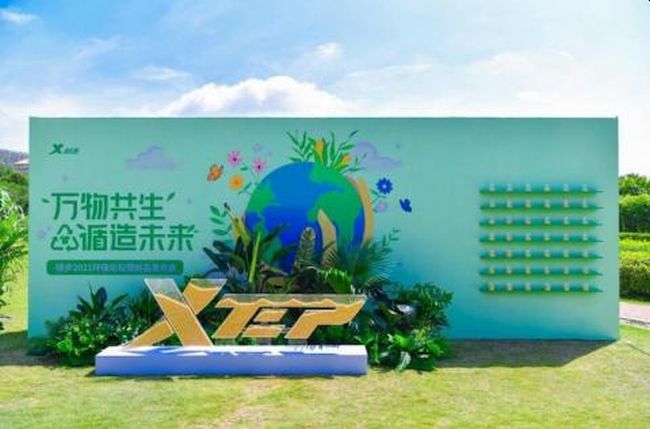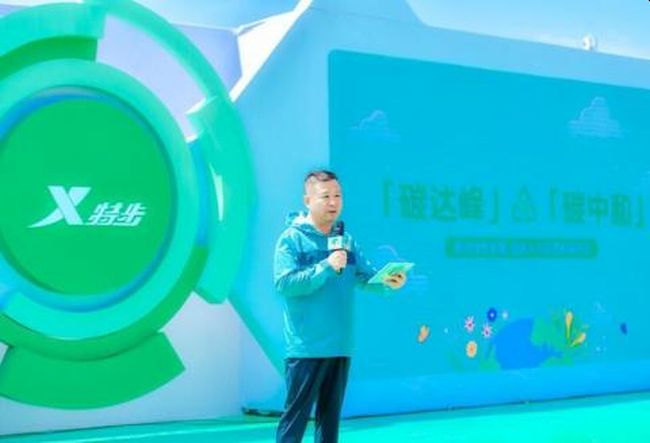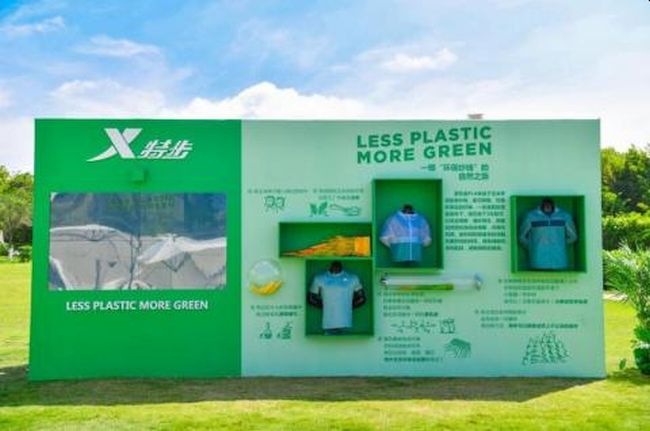The pollution of textile and clothing industry has existed for a long time, and the green transformation is imminent. According to the United Nations, the total carbon emissions of the fashion industry exceed those of all international flights and shipping combined, accounting for 10% of global carbon emissions, making it the second most polluting industry after the oil industry. Regarding how to reduce pollution in the fashion industry, Xtep, a Chinese sporting goods brand, is providing its own solution.



On June 3, a new environmentally friendly product, the polylactic acid T-shirt, was launched by Xtep. Polylactic acid (PLA) is mainly extracted from corn, straw and other starch-containing crops and transformed into polylactic acid fiber after spinning. The clothes made of polylactic acid fiber being buried in a specific environment can be degraded naturally within one year. This method of replacing plastic chemical fiber with polylactic acid can reduce the harm to the environment from the source.
As early as June 5 2020, the World Environment Day, Xtep launched the world’s first PLA windbreaker, becoming the first enterprise in the industry to overcome the problem of PLA coloring and achieve the production of polylactic acid products. At that time, PLA accounted for 19% of the whole trench coat fabric. One year later, the proportion of today’s PLA T-shirts has risen sharply to 60%.
Xtep said that the PLA content of knitted sweaters scheduled to go on sale in the second quarter of 2022 will be further increased to 67%, and in the third quarter of the same year, 100% pure PLA trench coats will be on the market, really coming from the field, going to the field, and “sowing” clothes. In the future, Xtep will gradually achieve layers of breakthroughs in the application of PLA products, and strive to achieve more than one million pieces of PLA products in a single season before 2023.
At the press conference on the same day, Xtep also displayed all the environmentally friendly products of the group’s “environmental protection family”. In addition to the ready-made clothing made of PLA material, there are also shoes, clothing and accessories made of organic cotton, serona, DuPont paper and other environmentally friendly materials. The design and production of environmentally friendly products is not only limited to the main brands of Xtep Group, its new brands Saucony and Palladium also join the exploration in the field of environmental protection. It is understood that at present, products made of environmentally friendly materials account for 30% of the entire category of Xtep Group.
It is supported by the powerful patron of Xtep environmental protection technology platform. Xtep environmental protection technology platform promotes environmental protection from the three dimensions of “raw material environmental protection”, “production environmental protection” and “environmental protection by consumption”, and has become the main driving force of the group’s green material innovation. Among them, “raw material environmental protection” and “production environmental protection” not only attach importance to the environmental protection of raw materials, but also attach importance to the environmental protection of the production process. Because of the non-high temperature resistance of PLA, the dyeing temperature and setting temperature of the production process are 0-10 degrees Celsius and 40-60 degrees Celsius, respectively, which are lower than those of ordinary polyester. If all the fabrics of Xtep are replaced with PLA, 300 million cubic meters of natural gas can be saved per year, which is equivalent to 2.6 billion kilowatt-hours of electricity and 620000 tons of coal consumption.
Lu Peng, a researcher at the Institute of Sociology of the Chinese Academy of Social Sciences, believes that the sense of social responsibility of China’s private enterprises is constantly improving, and the awareness of collective environmental protection is becoming the mainstream of China’s private enterprises. The practice of sustainable development by a larger company like Xtep will bring great inspiration to the “concept of justice and benefit” of Chinese and even global counterparts.
Xtep Group (1368:HK) is a leading enterprise of sporting shoes and clothing in China. It was founded in 1987 and listed in Hong Kong in 2008. In 2019, Xtep signed Jeremy Shu-how Lin to enter the field of basketball. In the same year, Xtep acquired the development, marketing, and distribution of Saucony and Merrell in mainland China, Hong Kong, and Macau, and wholly acquired K-Swiss and Palladium brands. In 2020, Xtep Group’s revenue exceeded 8.1 billion yuan.
For further information, please visit:
https://en.xtep.com
https://global.xtep.com
https://global-uk.xtep.com
https://www.facebook.com/XTEPSPORTS
https://www.instagram.com/xtepofficial/
Contacts
Xtep Group
Li Xiansheng
overseas@xtep.com.cn
